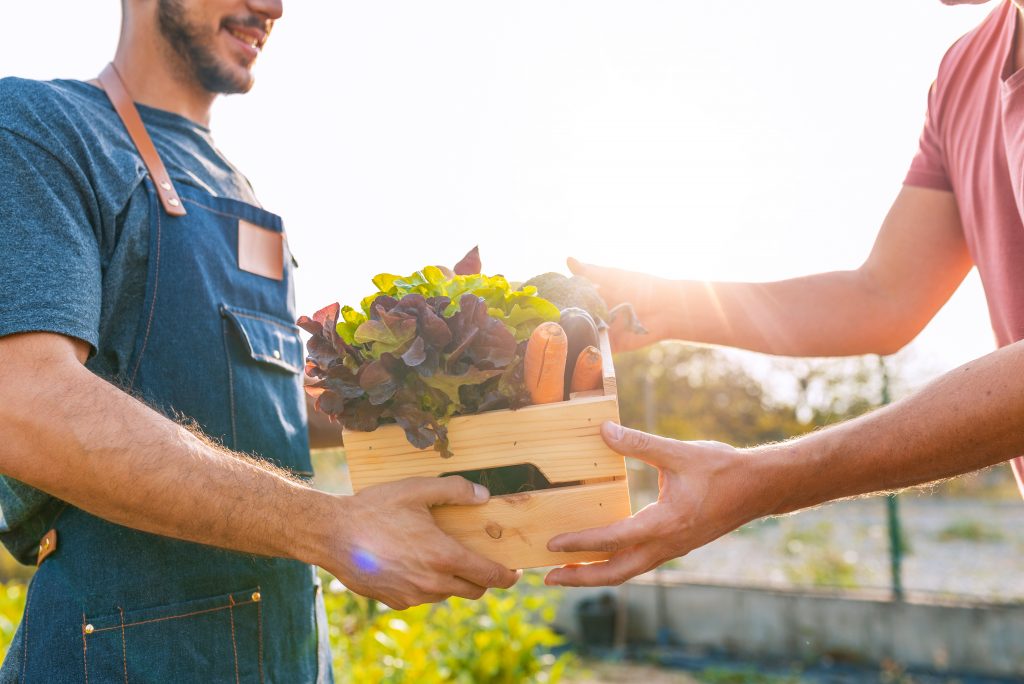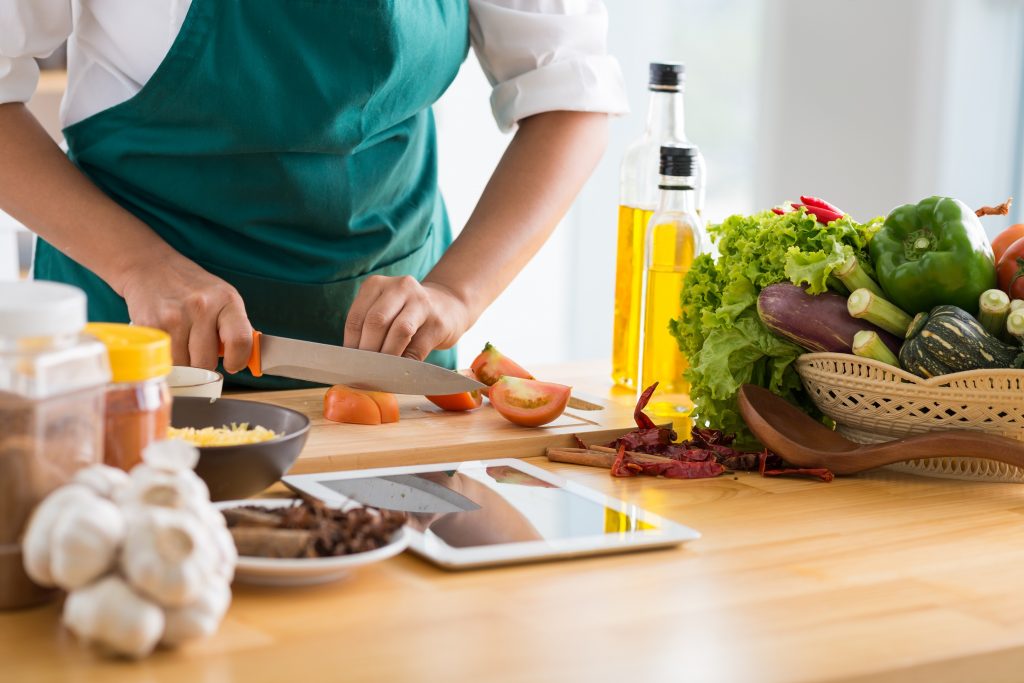What´s new for the agrifood sector with the European Green Deal?

On Wednesday 20 May, the EU Commission presented the long awaited- “From farm-to-fork” strategy after a few weeks of delay dur to the coronavirus pandemic.
As expected, farmers and livestock breeders, and the entire food value chain, until to take a step further in meeting greater environmental and climate change commitments than they have done until now.
Although in principle and without knowing the details of the document, people raised their voices even before the details of the document were revealed. They say the new demands would be a setback compared to agrifood production in third countries (which are not, and cannot be, required to have the same environmental involvement). But neither can the same social or economic demands be made of them. All these demands are fundamental pillars for achieving any sustainability objective.
The dissatisfaction of the sector has much to do with the negotiation of the future European Commission Multiannual Financial Framework 2017-2021, whose proposal envisages significant cuts both in the funds for direct grants from the CAP (EU´s Common Agricultural Policy) and in those intended to finance the various measures of its second pillar: Rural development, additional to the planned cuts in the cohesion funds, which are linked to the territory.
But transforming the current sector, modernising it and adapting it to the new climate paradigm is not an easy task. This transition requires a collective approach involving public authorities at all levels of government (including cities, rural and coastal communities), private sector actors across the food value chain, non-governmental organisations, social partners, academia and citizens.
In addition to all this expectation prior to the communication of the “From farm to fork” strategy, there was another unexpected factor, the health crisis of COVID-19. The European Commission is using the momentum to increase the EU’s resilience and competitiveness.
In this sense, Frans Timmermans, Vice-President of the European Commission said:
“The coronavirus crisis has shown how vulnerable we all are, and how important it is to restore the balance between human activity and nature. At the heart of the Green Deal and the Biodiversity and Farm to Fork strategies point is a new and better balance of nature, food systems and biodiversity; to protect our people’s health and well-being, and at the same time to increase the EU’s competitiveness and resilience. These strategies are a crucial part of the great transition we are embarking upon.”
The COVID-19 pandemic has also highlighted the importance of health and its relationship to food, and the consequences of reducing costs related to public health, In addition, there is a perception that Europeans, now more than ever, value food more, especially fresh, less processed food from sustainable sources, putting value on short supply chains.
Although supermarket food shelves remain stocked, this pandemic has raised many challenges such as logistical disruptions in supply chains, labour shortages, loss of certain markets and changes in consumption patterns. These have impacted the mechanisms of our food systems.
In Europe, the COVID-19 crisis has not only revealed the weaknesses of health and economic systems, it has also brought into focus the social crisis and the importance of food sovereignty. The images of families standing in long queues at food banks to buy basic food commodities like in Spain or Germany, were striking.
“From farm to fork” strategy
COVID-19 has created the need for reflection. And, this article is written at a time when the European strategy provides an opportunity for the agrifood sector to positively change.
The “From Farm to Fork” strategy urges the agrifood sector to take the lead in making the EU food system a global example of sustainability.
This strategy not only sets out the guidelines to create a food chain that works for the whole community, but also points out how to articulate and facilitate this transition, which needs to be just, especially in the wake of the COVID-19 pandemic and the weakening of the economy.
The strategy also refers to the European Commission’s agenda for achieving the UN’s Sustainable Development Goals (SDGs) as a key component. Particular emphasis is placed here on guaranteeing primary producers sustainable livelihoods and sufficient revenues to ensure their social and economic recovery and to be able to facilitate this transition to a sustainable food system.
In order to accelerate and facilitate this transition and to ensure that all food placed on the EU market becomes increasingly sustainable, the Commission will present a legislative proposal on a framework for a sustainable food system by 2023.
Furthermore, to successfully implement this transition, the European Commission will be monitoring progress, closely linked to the Biodiversity Strategy planned for 2030 and consistent with the new Circular Economy Plan and the aspiration towards a carbon-neutral economy.
The primary sector: Sustainable food production and carbon sequestration
Agriculture is responsible for 10.3 per cent of the EU’s greenhouse gas emissions (GHGs) and almost 70 per cent of its emissions come from the livestock sector. These GHGs include methane and nitrous oxide, which are just as harmful to the atmosphere as CO2. In addition, 68 per cent of agricultural land is used for animal production.
The sector sees these increased ambitions for agricultural sustainability while reducing the budget as a threat to achieving the expected results, especially if this transition is not fairly articulated. This will also require the involvement of the private sector, which can see an opportunity in this strategic sector i.e. a return on investment. Also, the participation and commitment of national and regional administrations will provide the framework for meeting the challenge.
In this respect, the Commission will make recommendations concerning the nine specific objectives of the CAPfor each of the Member States before they officially submit their respective draft strategic plan. It will pay particular attention to achieving the objectives of the European Green Deal, as well as those arising from the “From farm to fork” strategy and the Biodiversity Strategy for 2030.

The implementation of the European Green Deal and the new approach to the CAP, is bound to change this perception. The effort that the primary sector has to make to increase the resilience of the moment, investing in modernisation, digitalisation and optimisation of resources, all with a strain on human resources and finance, is unquestionable, but it is also essential to visualise that this transformation will translate into higher yields by creating added value and reducing costs.
The challenge now is how to get farmers and foresters to adapt themselves towards a new green business model by capturing CO2 (Carbon farming). And whether their sustainable agricultural practices are rewarded through the CAP or other public or private initiatives.
Within the sustainable agricultural transformation plan is an ambitious objective to transform 25 per cent of the EU’s agricultural land into organic production. This requires encouraging the consumption of this type of agriculture, not only because of its positive impact on biodiversity, but also because it creates jobs and attracts young farmers who help to slow down rural depopulation. Furthermore, the growing demand for organic food, provides a good framework for achieving this ambitious objective.
Sustainable food production also hinges on the stimulating and promoting the organic-based circular economy.For example, livestock farmers could reduce methane emissions from livestock and use them for biogas productionthrough the purchase of anaerobic digesters that transform dung and other waste.
The rest of the “From farm to fork” Strategy focuses on reducing the use of chemical pesticides to prevent soil, water and air pollution and biodiversity loss, and to prevent the overuse of nutrients (particularly nitrogen and phosphorus).
It also provides the livestock sector with a framework for action to improve animal welfare and reduce the use of antimicrobials.
For fisheries and other seafood from aquaculture, whose carbon footprint compared to land-based animal production is certainly much lower, significant support for sustainable seafood production is foreseen, with a special mention of the seaweed sector as an important source of alternative protein, through the forthcoming European Maritime and Fisheries Fund.
Reactions from the agricultural sector and suspicion of the Nordic countries
Different reactions within the sector and from different Member States started to gather just a few hours after the publication of the strategy.
COPA-COGECA (Committee of Professional Agricultural Organisations – General Confederation of Agricultural Cooperatives in the EU), claims that the costs of implementing this new policy must be covered by all, from farmers and processors, to retailers and consumers, leaving no one behind and protecting the economically vulnerable from unintended consequences.
But in advance of this reaction, the Commission announced a legislative proposal before the end of 2023 that will promote coherence between national and EU policies. This legislative framework will also address the responsibilities of all stakeholders in the food system. Together with certification and labelling on the level of sustainability of food products and incentives, the framework will allow the benefit of sustainable practices for producers and will progressively raise sustainability standards to become the standard for all food products brought to the EU market.
The European Commission proposes that, in order to achieve the goal of sustainability, all countries must reduce their pesticide consumption by 50 per cent based on current consumption in each country. In practice, this will lead to disproportionally impact the Nordic countries, which consider it completely irrational and unfair not to recognize the major pesticide reduction efforts they have already made and to enforce a 50 per cent reduction in their current levels as well.
Even so, the discrepancy between the North and the South of Europe, is once again evident. North countries fear that there will be a competitive distortion if it is not understood that their agriculture has always been greener than in other EU countries. That is why they are demanding further negotiation of the strategies proposed for the next three years on an individual basis.
The Danish agricultural sectors, in fact, feel that they have demonstrated that they are ready for a change towards sustainable production and want the EU to take inspiration from Denmark as a pioneer, although certain groups are a little skeptical.
Danish MEP Asger Christensen, in response to the proposal that 25 per cent of the cultivated land should be organic, said this could weaken organic farming and now that the proposals have been made public, he called them “a disaster”. While he is generally happy with the suggestion to make European food and production more sustainable and the need for more incentives to make this green transition a reality, with clear support and commitment to ecology and skilled Danish organic farmers, the random policy target that 25 per cent of EU agricultural land should be organic, he believes it may undercut the industry.
On the other hand, in southern Europe, apart from concerns about the lack of budgetary reinforcement of the CAP, and the efforts that will be required from farmers to achieve these goals, they are concerned that the same standards of sustainability, food quality and safety, plant health and animal welfare will not be demanded of agricultural imports from third countries.
Beyond the need for action, we must ensure, stimulate, promote, reduce and fight for a food chain that works for all.
Coming back to the Strategy, it highlights, even more so in the face of the current health, social and economic crisis, the need to build a food chain that works for all.
This will be the case if access to and security of supply of nutritious, environmentally friendly, safe, quality food and high standards of animal welfare are preserved, while generating a fairer economic return in the supply chain.
The latter means that the most sustainable food is also ultimately the most affordable for healthier diets, in turn fostering the competitiveness of the EU supply industry, promoting fair trade, with new business opportunities to ensure the integrity of the single market and health and safety at work.
One of the most interesting and innovative aspects addressed in the document is the importance of reducing dependence on agricultural raw materials for the production of animal feed, by promoting the introduction of more sustainable alternative proteins, both vegetable and seaweed-based, such as so-called insect proteins and the use of bio-economy by-products (e.g. fish waste).
The Commission will also support the reduction of dependence on long-distance transport in order to increase the resilience of local and regional food systems and to create shorter supply chains.
Healthy, sustainable, and low waste diets
Unhealthy diets, which cause cardiovascular disease and cancer, are responsible for more than 950,000 deaths in the EU in 2017 (one in five).
To slow down the progress of diet-related diseases, the Commission will propose harmonised mandatory nutrition labelling on the front of packaging and will consider proposing the extension of mandatory indications of origin or provenance to certain products, taking full account of the impact on the single market. The Commission will also consider methods to harmonise voluntary organic claims and to create a sustainable labelling framework covering, in synergy with other relevant initiatives, the nutritional, climate, environmental and social aspects of food products.

To improve the availability and price of sustainable food and to promote healthy and sustainable diets in public or institutional restaurants, the Commission intends to establish a mandatory minimum criteria for the purchase of sustainable food in particular in the public sector (schools, hospitals and public institutions), and will also promote sustainable farming systems such as organic farming. The Commission’s proposal on VAT rates (currently under discussion in the Council) would allow Member States to use them in a more focused way, for example to support organic fruit and vegetables.
Furthermore, the food industry and the retail sector should show the way by increasing the availability and affordability of healthy and sustainable food choices in order to reduce the overall environmental footprint of the food system. To promote this, the Commission will develop an EU code of conduct for responsible business and marketing practice, accompanied by a monitoring framework. The code will be developed in coordination with all the relevant stakeholders.
“From farm to fork” Strategy also addresses the issue of preventing food loss and waste along the entire food value chain, and the Commission will therefore articulate tools to achieve the commitment to reduce per capita food waste at retail level and by consumers by half by 2030.
Facilitate the transition and alignment of the strategy with Climate KIC’s enabling services
Two key sections, aligned with this European strategy and that of Climate KIC, support this part of the document: The acknowledgement of innovation and research as drivers to speed up this transition, and the availability of advisory services, knowledge and capacity-building for all stakeholders in the food system to be sustainable.
This will require investments that foster their early implementation. In this sense, the Commission will articulate several financial instruments, a new call for proposals for the priorities of the Green Deal in 2020 with a total of approximately €1 billion, within the framework of the Horizon 2020 Programme for Research and Innovation, and €10 billion within the framework of the Horizon Europe Programme for R&D in food, bio-economy, natural resources, agriculture, fisheries, aquaculture and environment, use of digital technologies and nature-based solutions.
Our mode uses a portfolio of actions and solutions – in education, technological innovation, citizen participation, policies, finance and other relevant levers of change – to catalyse a rapid decarbonisation that drives adaptation to the climate and business models and value chains consistent with the objective of limiting the increase in average temperature to 1.5 º C.
Out of the eight Deep Demonstrations that Climate KIC has launched, one is perfectly aligned with the new European “farm-to-fork” Strategy, “Resilient Food Systems and Diets”. This Deep Demonstration has started addressing primary production and the dairy value in Northern Europe, and food policies in regions and especially cities in Northern Europe, which also involve public procurement.
